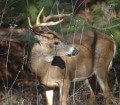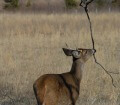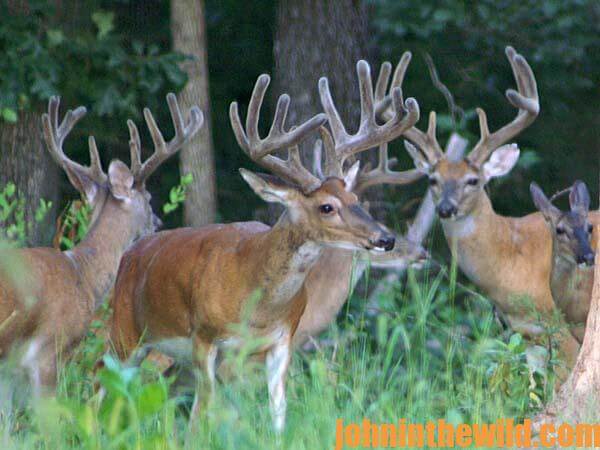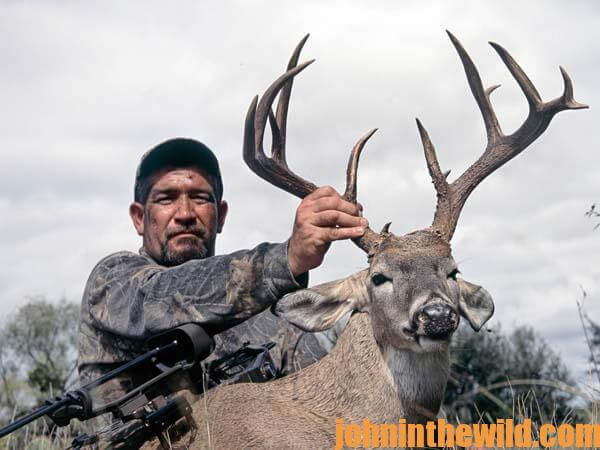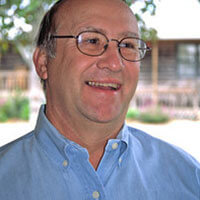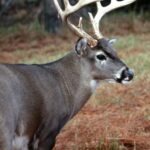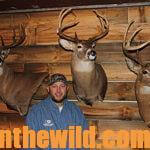John’s Note: What can you learn about deer from antlers? Do bucks grow new antlers each year? If a buck’s an 8-point deer one year, will he be a 9 point the next year? What causes some deer to have high, wide-racked antlers, while other deer may have narrow, spindly antlers? These are just a few of the questions we posed some years ago to two of the nation’s leading wildlife scientists – Dale Sheffer, the then Director of the Bureau of Wildlife Management for the State of Pennsylvania, and Dr. James G. Teer, today the Director Emeritus of the Welder Wildlife Foundation, in Sinton, Texas.
Other contributing factors in the size and weight of antlers are the age and the genetic makeup of the deer.
Some hunters claim to be able to determine the age of a buck by the number of points the deer has as well as the length of the points, the spread of the rack and/or the weight of the rack.
Dr. Teer advises that a loose correlation does exist between antler development and age. “You can tell a deer is young if his rack is not much wider than his ears, and the diameter of the main beam and the diameters of each of the points are about the diameter of a pencil. When that buck stands next to a deer with a wide, high, heavy rack, determining which deer is the older usually isn’t difficult. Although hunters may be able to visually note the difference between a young buck and an older buck, I don’t believe they can look at a deer and state positively that the animal is a 3- or a 4-year old.”
Sheffer observes that the tendency toward wide racks is a genetic characteristic more than a characteristic of age. “Genetic studies done at Penn State have demonstrated a young buck’s antlers will look much like the antlers of the buck that sires him. But another factor in the genetic makeup of a buck’s antlers is the general health and physical condition of the mother. A healthy doe is as critical if not more critical to big bucks with heavy antlers as a good sire.”
The Dominant Buck: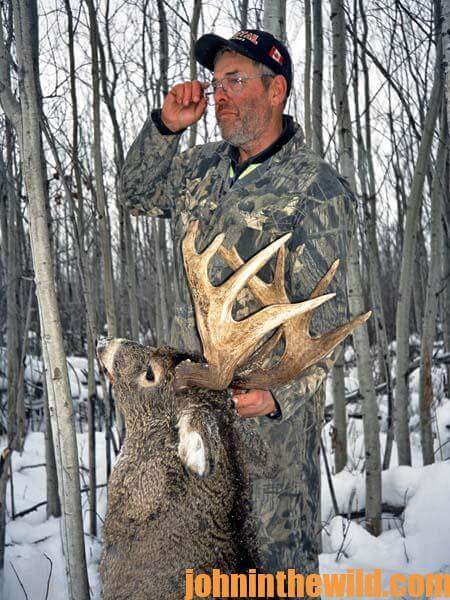
Other questions often asked are whether the buck with the largest antlers in the herd is genetically superior, and is he the dominant buck? “The buck with the biggest antlers in the herd can be the dominant buck but very well may not be the most-genetically-superior animal in the herd,” Dr. Teer observes. “A young buck in the herd with smaller antlers may be genetically superior to all the other bucks and possess antlers bigger than what the biggest buck has – if that young buck is allowed to survive long enough to demonstrate his genetic superiority. Also a young buck, if allowed to mature, may transmit bigger genes to his offspring than the biggest buck in the herd at any given time. Some hunters may think they should harvest the younger bucks they consider not on par genetically with the older deer to clean-up the gene pool of the herd and make it stronger. But those younger bucks may have better genes than the older ones. You can’t visually pick out a genetically-superior buck from a group.
“A dominant buck is always the strongest and toughest buck in the herd – no matter what his antlers look like.
A dominant buck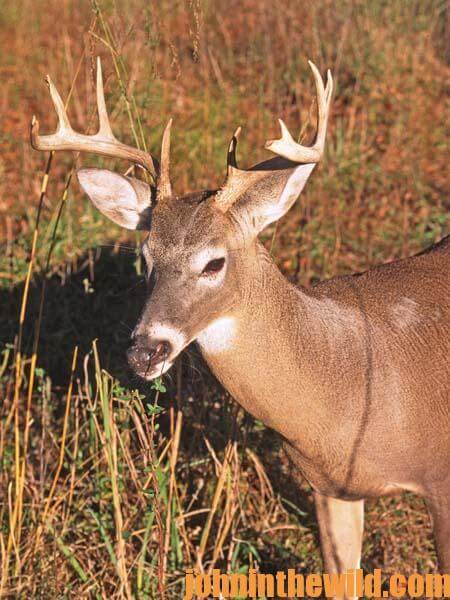 may be like a 143-pound tough guy who is as strong as a 200-pound muscle man. If the animal with smaller antlers is a stronger and better fighter than the buck with bigger antlers, then the younger, stronger deer will be dominant. Although often the heavier-antlered buck will have a decided advantage over a buck with smaller antlers – this is not always true. Also remember that not just one dominant buck may live in an area. For instance, if four bucks and 40 does are in a 2-square mile area, one buck can’t breed all 40 does – no matter what his antler size or what position he holds in the herd.”
may be like a 143-pound tough guy who is as strong as a 200-pound muscle man. If the animal with smaller antlers is a stronger and better fighter than the buck with bigger antlers, then the younger, stronger deer will be dominant. Although often the heavier-antlered buck will have a decided advantage over a buck with smaller antlers – this is not always true. Also remember that not just one dominant buck may live in an area. For instance, if four bucks and 40 does are in a 2-square mile area, one buck can’t breed all 40 does – no matter what his antler size or what position he holds in the herd.”
To learn more about deer hunting, you can get John E. Phillips’ Kindle eBooks, “How to Hunt Deer Up Close: With Bows, Rifles, Muzzleloaders and Crossbows,” “PhD Whitetails: How to Hunt and Take the Smartest Deer on Any Property,” “How to Take Monster Bucks,” and “How to Hunt Deer Like a Pro,” or to prepare venison, get “Deer & Fixings.” Click here here to get these books.
Share this page with a friend!
John Phillips, winner of the 2012 Homer Circle Fishing Award for outstanding fishing writer by the American Sportfishing Association (ASA) and the Professional Outdoor Media Association (POMA), the 2008 Crossbow Communicator of the year and the 2007 Legendary Communicator chosen for induction into the National Fresh Water Hall of Fame, is a freelance writer (over 6,000 magazine articles for about 100 magazines and several thousand newspaper columns published), magazine editor, photographer for print media as well as industry catalogues (over 25,000 photos published), lecturer, outdoor consultant, marketing consultant, book author and daily internet content provider with an overview of the outdoors.

